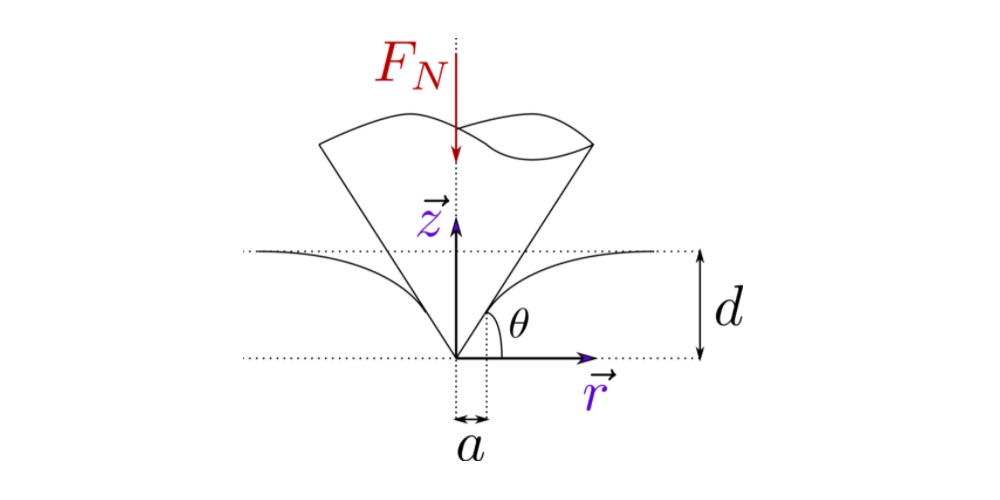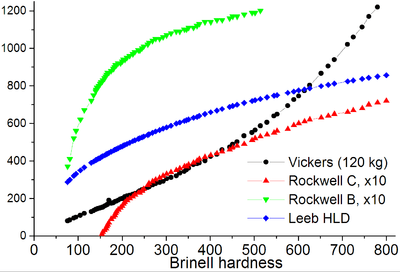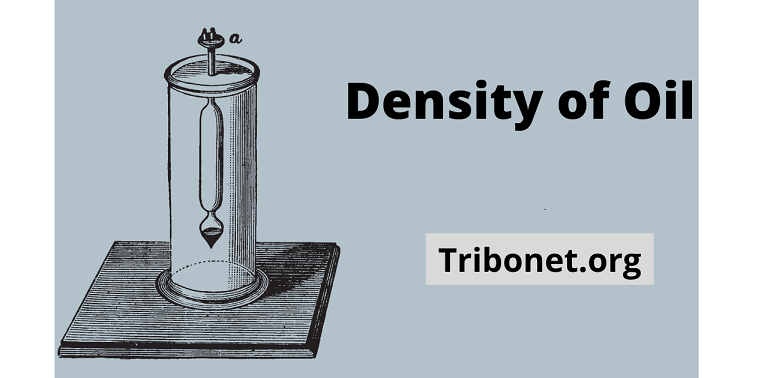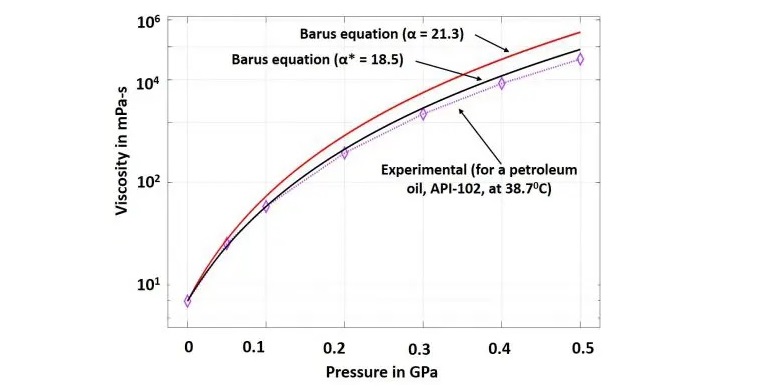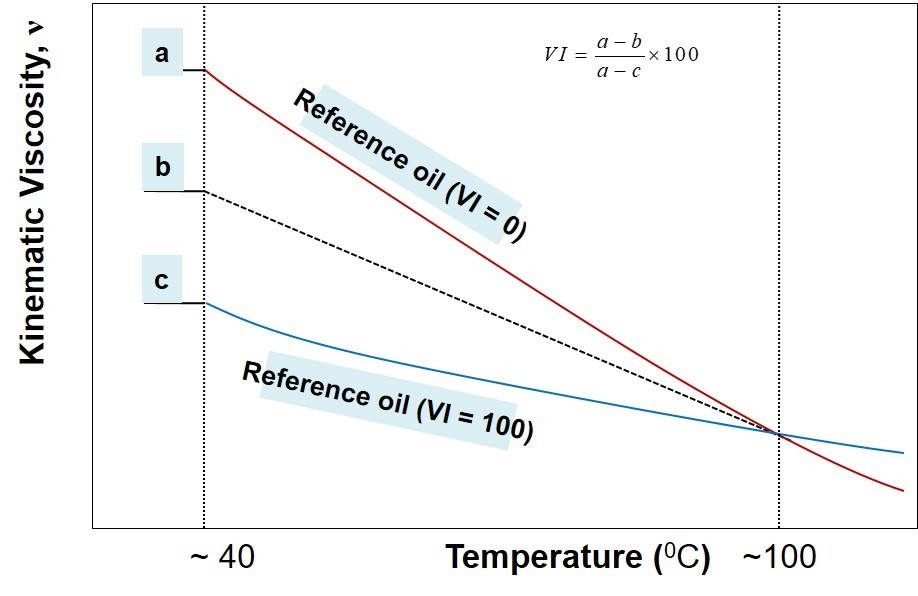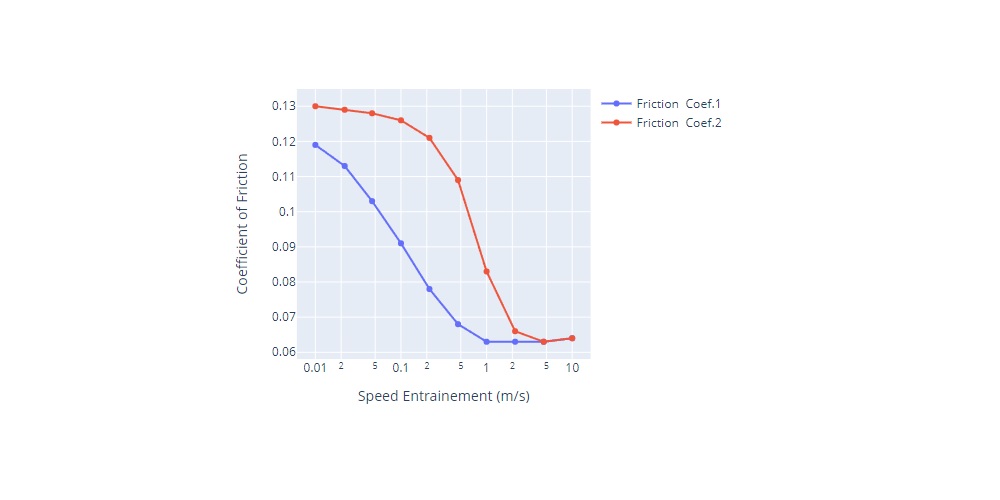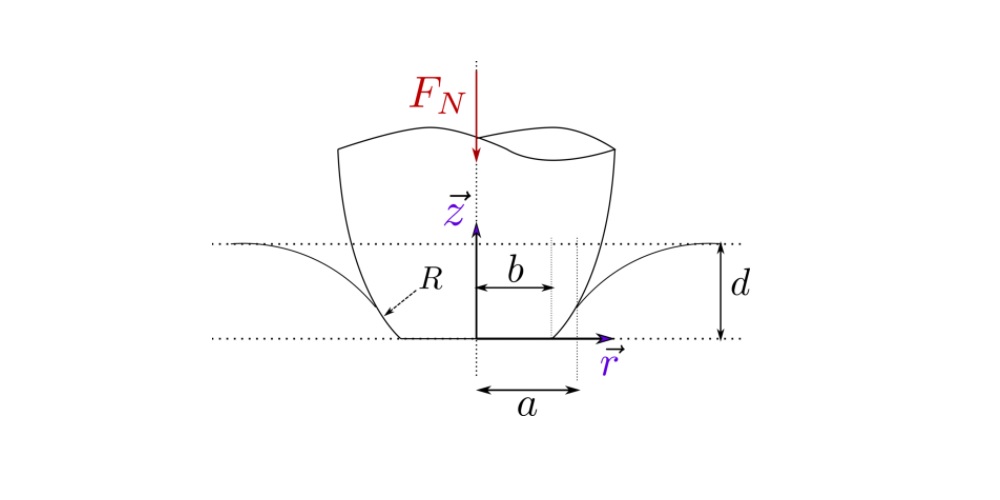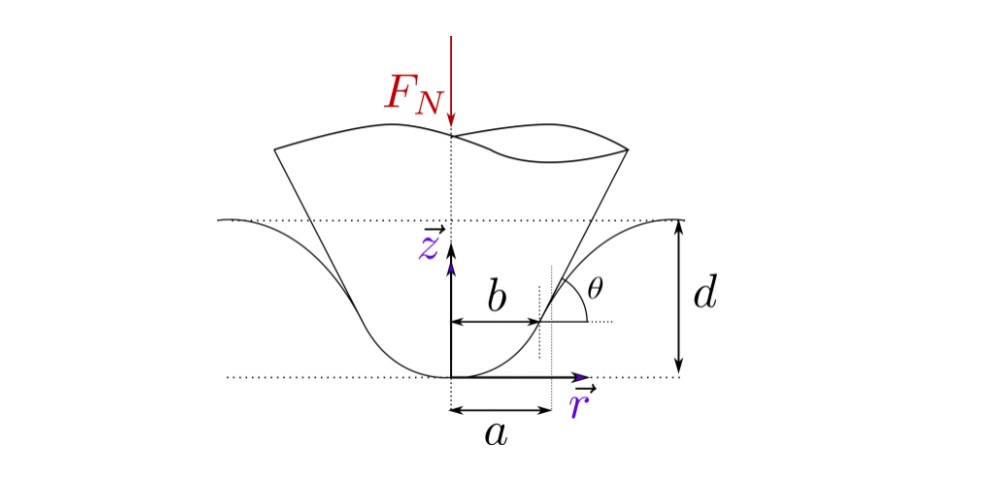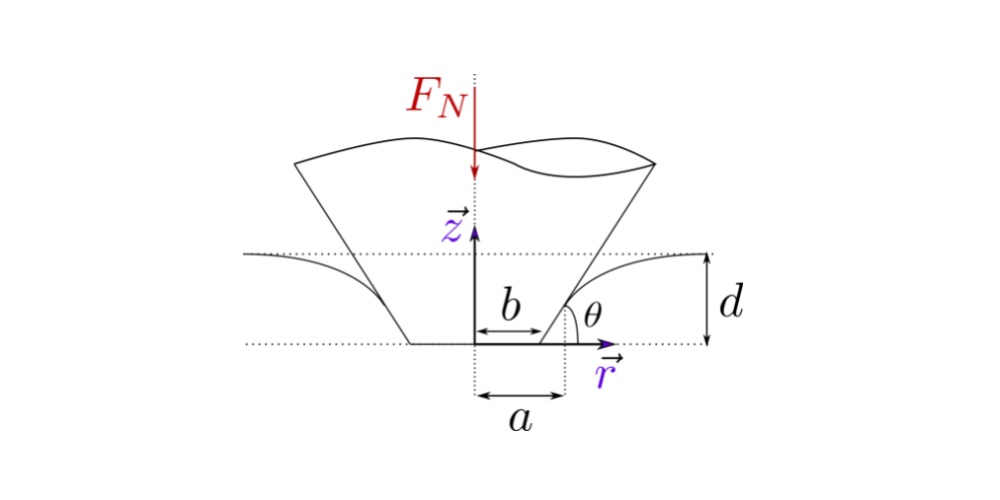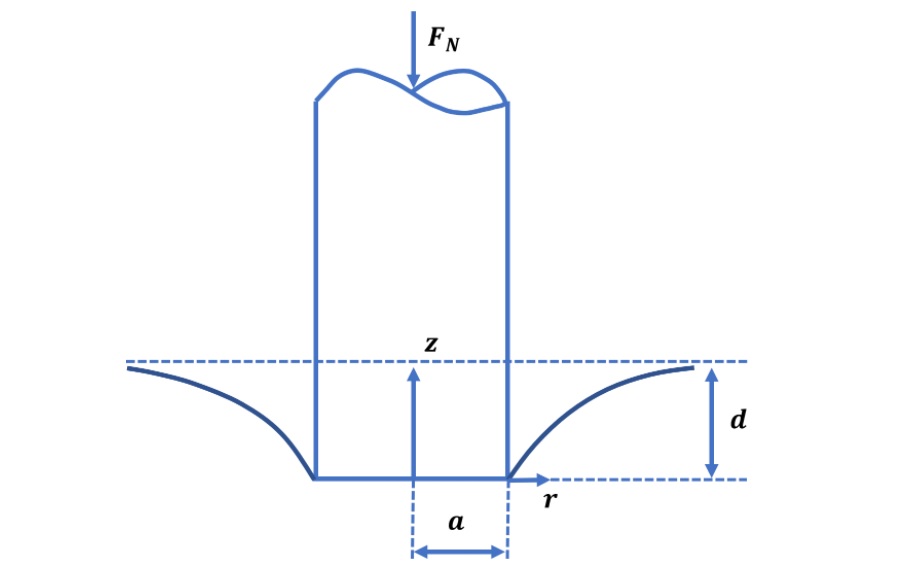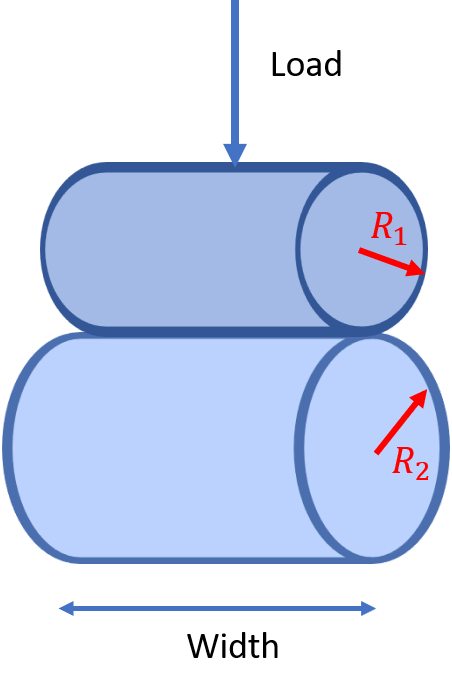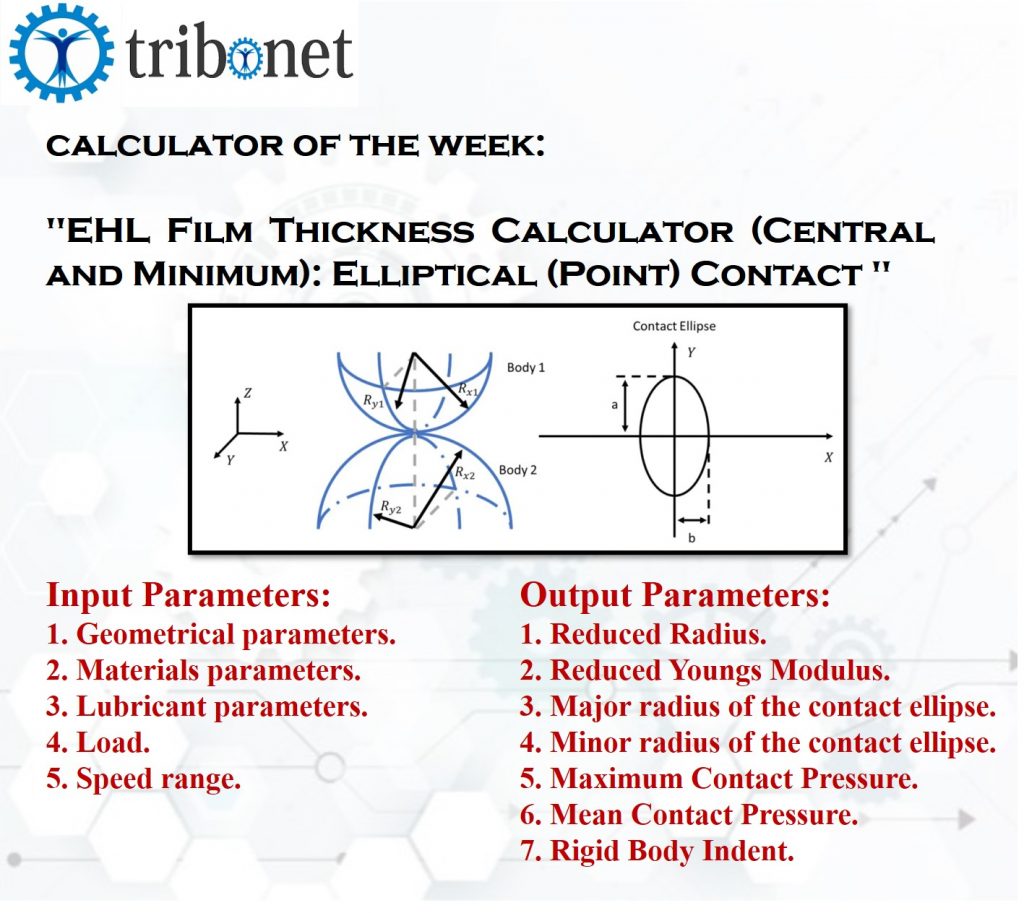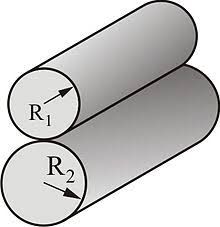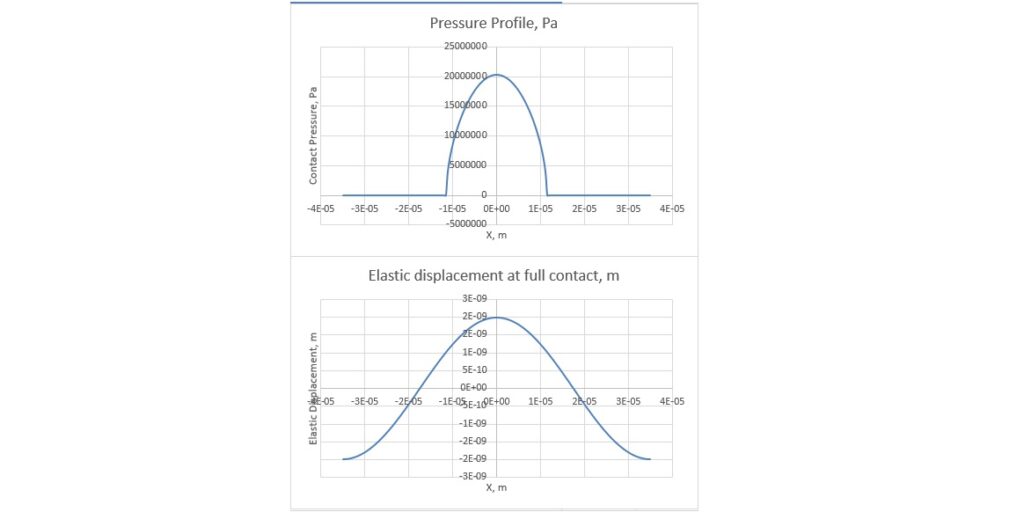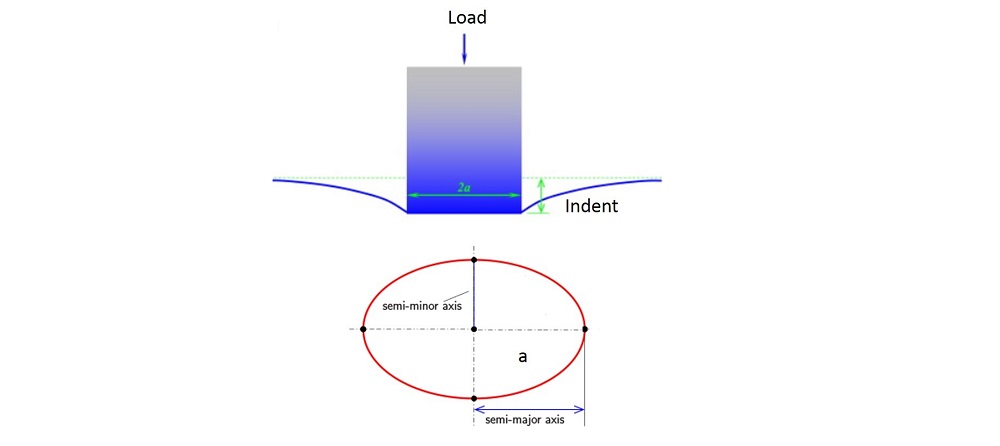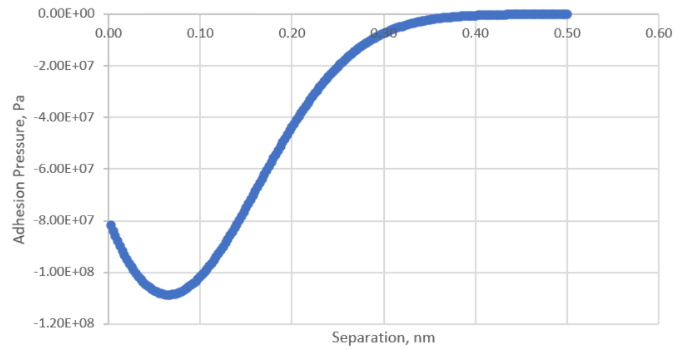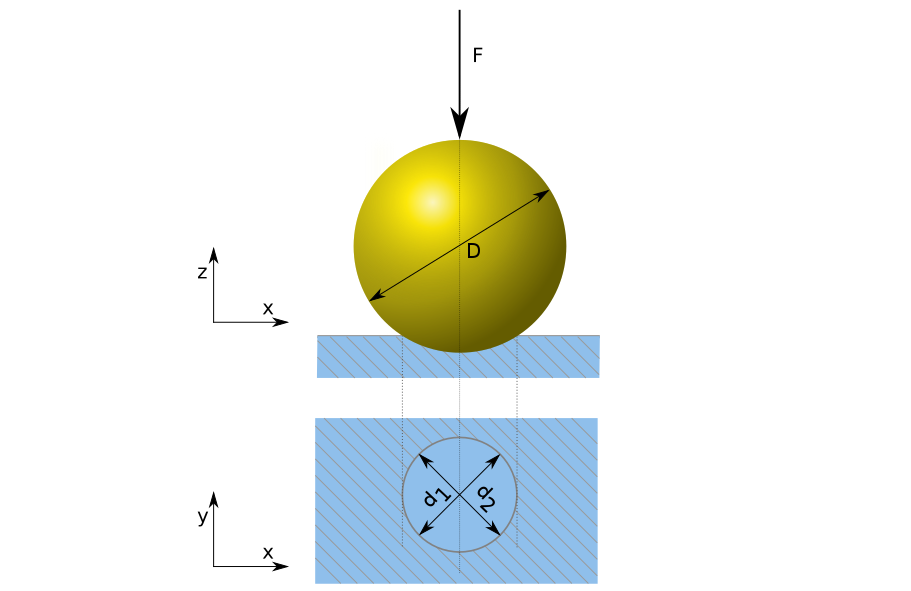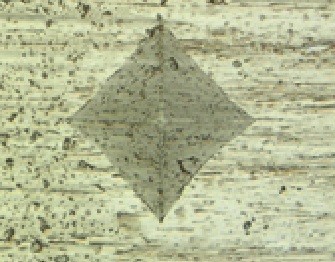Administration of the project
Rigid Cone on Elastic Flat: Online Calculator
Conical Indenter
The conical intender is characterized by its inclination angle ![]() . After applying a rigid body motion
. After applying a rigid body motion ![]() (resulting in normal load
(resulting in normal load ![]() ) on an elastic substrate, the intender deforms the substrate and creates elastic deformation and effective contact radius
) on an elastic substrate, the intender deforms the substrate and creates elastic deformation and effective contact radius ![]() as shown in the figure.
as shown in the figure.
Displacement depth ![]() , inclination angle
, inclination angle ![]() and contact radius
and contact radius ![]() are all related to other geometrically. The contact radius
are all related to other geometrically. The contact radius ![]() can be calculated using the relation:
can be calculated using the relation:
(1) 
The profile of the stress ![]() and the displacement
and the displacement ![]() are determined by the formulas below ([1]):
are determined by the formulas below ([1]):
(2) ![Rendered by QuickLaTeX.com \begin{align*} \sigma_{zz}(r;a) &= -p_0 \arccosh\left(\frac{a}{r}\right), \hspace{1cm} r\leq a\\ \omega(r;a) &= a \tan(\theta)\left[ \arcsin \left(\frac{a}{r} + \frac{\sqrt{r^2-a^2} -r}{a} \right)\right], \hspace{1cm} r > a \end{align*}](https://quicklatex.com/cache3/f9/ql_991ca6c52ea4602fa55cb292875191f9_l3.png)
where ![]() is the average pressure which is given by the equation:
is the average pressure which is given by the equation:
(3) 
while ![]() is the elasticity of the substrate or the conical intender as well.
is the elasticity of the substrate or the conical intender as well.
These formulas are restricted to relatively small ![]() values.
values.
Definitions:
Poisson’s ratio of the substrate ![]() dimensionless,
dimensionless,
Young’s modulus of elasticity ![]() of the substrate, [Pa],
of the substrate, [Pa],
Equivalent elastic constant  , [Pa],
, [Pa],
Normal load ![]() , [N]
, [N]
